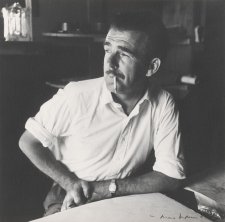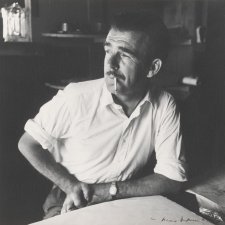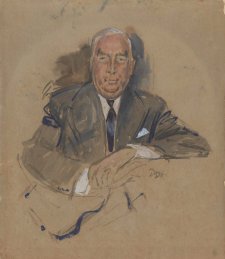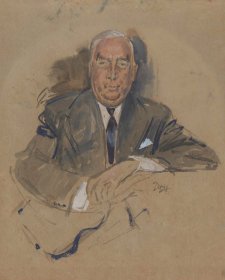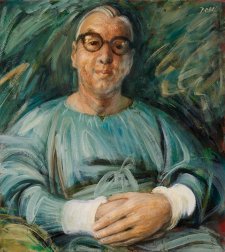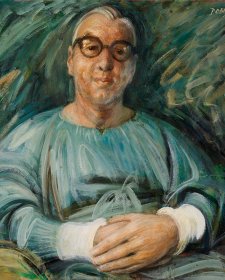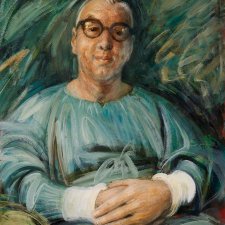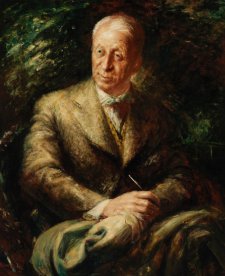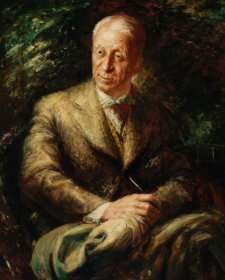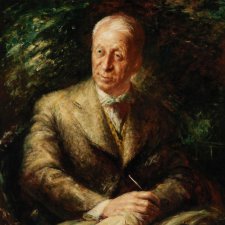Sir William Dobell (1899–1970), painter, studied art and was apprentice to an architect in Sydney before leaving Australia for Europe in 1929. On his return to Sydney after a decade he managed to impress conservative and modernist art factions alike. In the Second World War, Dobell served in a camouflage unit and the Civil Construction Corps of the Allied Works Council. Out of this experience, in 1943, came two portraits: one of Joe Westcott, a loudmouthed, indolent wharfie, titled The Billy Boy; and another of fellow artist and camoufleur, Joshua Smith. Both paintings were hung in the Archibald Prize exhibition that year, and the portrait of Smith was announced the winner. The decision was challenged, however, by a faction of conservative artists who claimed that Dobell's painting of his friend was a caricature, not a portrait, and who took the matter to court. Meanwhile, the National Art Gallery (as the AGNSW was then known) extended the exhibition dates and by March 1944 the painting had reportedly been viewed by over 140,000 people. The court eventually found in Dobell's favour – his lawyers having persuasively argued that likeness and photographic accuracy weren't necessarily one and the same thing. Dobell was affected physically and emotionally by the controversy and gave up painting for some time.
Slowly, the artist rebuilt his career; he won both the Wynne Prize for landscape and the Archibald Prize for the second time, with a portrait of Margaret Olley, in 1948. He won another Archibald in 1959, and Time magazine commissioned his portrait of Robert Menzies for its cover in 1960. These and other successes of Dobell's, including his knighthood, conferred in 1966, did much to increase the status of artists in Australia.
